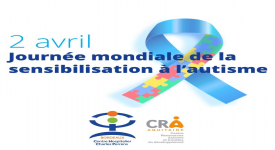Immediate effect of physical activity on the autonomic nervous system in individuals with autism spectrum disorders of different age groups: a randomised trial
BMJ Open Sport Exerc Med. 2024 Apr 11;10(2):e001822. doi: 10.1136/bmjsem-2023-001822. eCollection 2024.
ABSTRACT
BACKGROUND: Autism spectrum disorder (ASD) is one of the most complex neurodevelopmental disorders. It affects almost all human physiological systems. Individuals with ASD often display dysregulation in their autonomic nervous system (ANS), which may elicit differing effects across age groups. Also, studying the ANS missed several important parameters related to ANS. Studying the ANS is crucial in developing adaptive behavioural strategies and maintaining communication abilities and social behaviours. Thus, this study compared the immediate effect of physical activity on the ANS in individuals with ASD in different age groups.
METHODS: 200 participants (106 males and 94 females) took part in a double-blinded randomised design. All participants were divided into four groups according to their age (4-7, 7-10, 10-13 and 14-18 years old). Participants performed a 60 min treadmill walk. The main outcome measurements were heart rate (HR), saturation of peripheral oxygen (SpO2), respiratory rate (RR) and end-tidal carbon dioxide (etCO2).
RESULTS: Before the study, there were non-significant differences between groups in their physical characteristics (body mass index, Childhood Autism Rating Scale, physical activity level, both parents' existence, aerobic capacity and gender) (p>0.05). At baseline measurements, there were non-significant differences between all groups for all outcome measurements (p>0.05). Immediately after physical activity, there was significant difference between group 1 and other groups (p<0.05), while all other differences were non-significant (p>0.05). At the follow-up (after 15 min of rest), group 1 maintained significant differences with the other groups for all outcome measurements (p<0.05), while there were non-significant differences between the other three groups (p>0.05).
CONCLUSION: This study revealed that the SpO2 significantly decreased immediately after the physical activity, while HR, RR and etCO2 significantly increased immediately after physical activity in comparison to the baseline measurements. Contrary to other ANS parameters (SpO2, RR and etCO2), HR in early ages (4-7 years old) was higher after physical activity and remained elevated longer than other ages. The early ages (4-7 years old) take more time to return to the normal status of ANS parameters including SpO2, HR, RR and etCO2.
TRIAL REGISTRATION NUMBER: NCT05725733.
PMID:38617566 | PMC:PMC11015250 | DOI:10.1136/bmjsem-2023-001822




